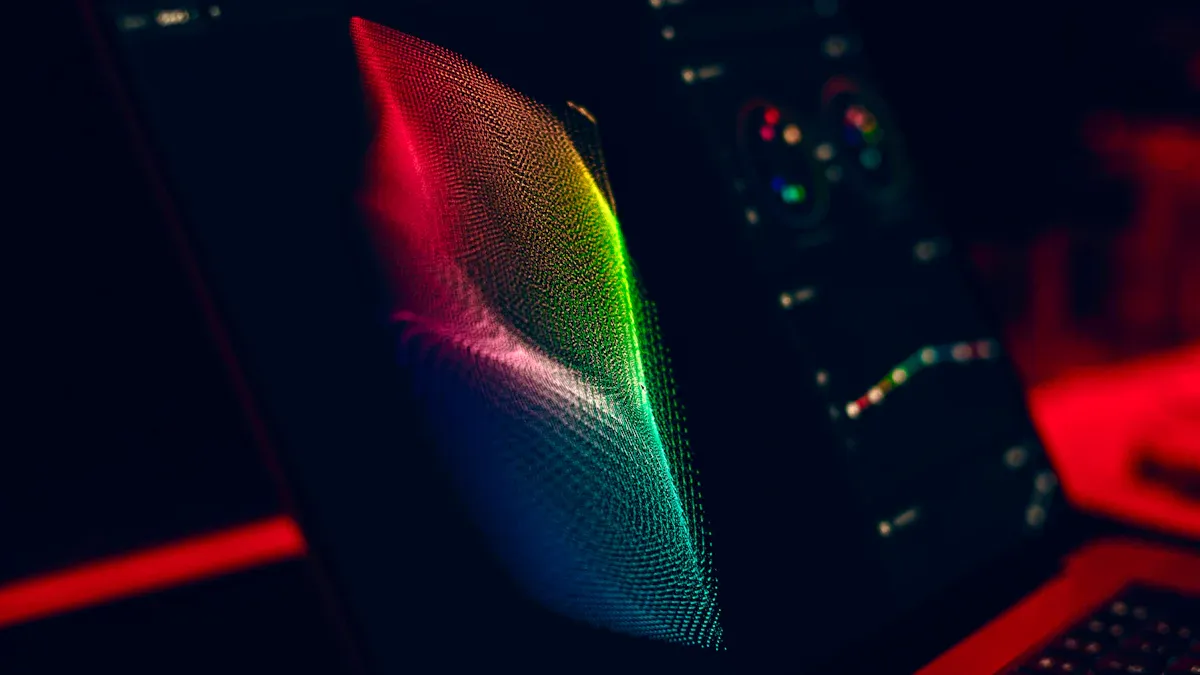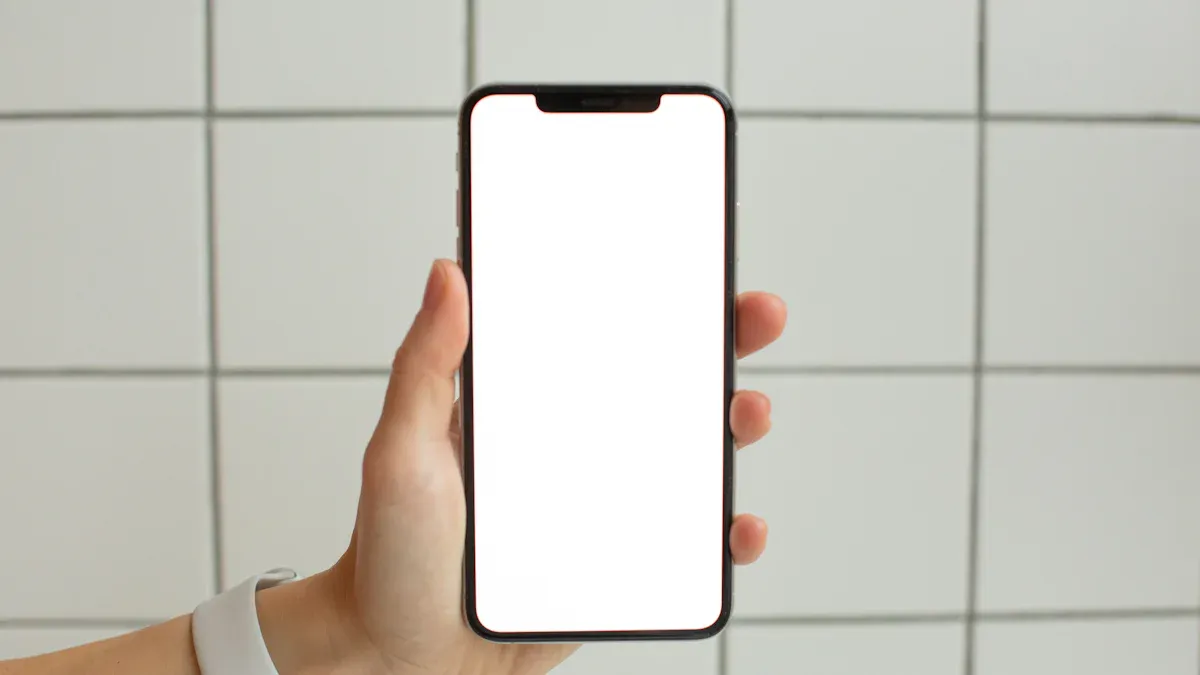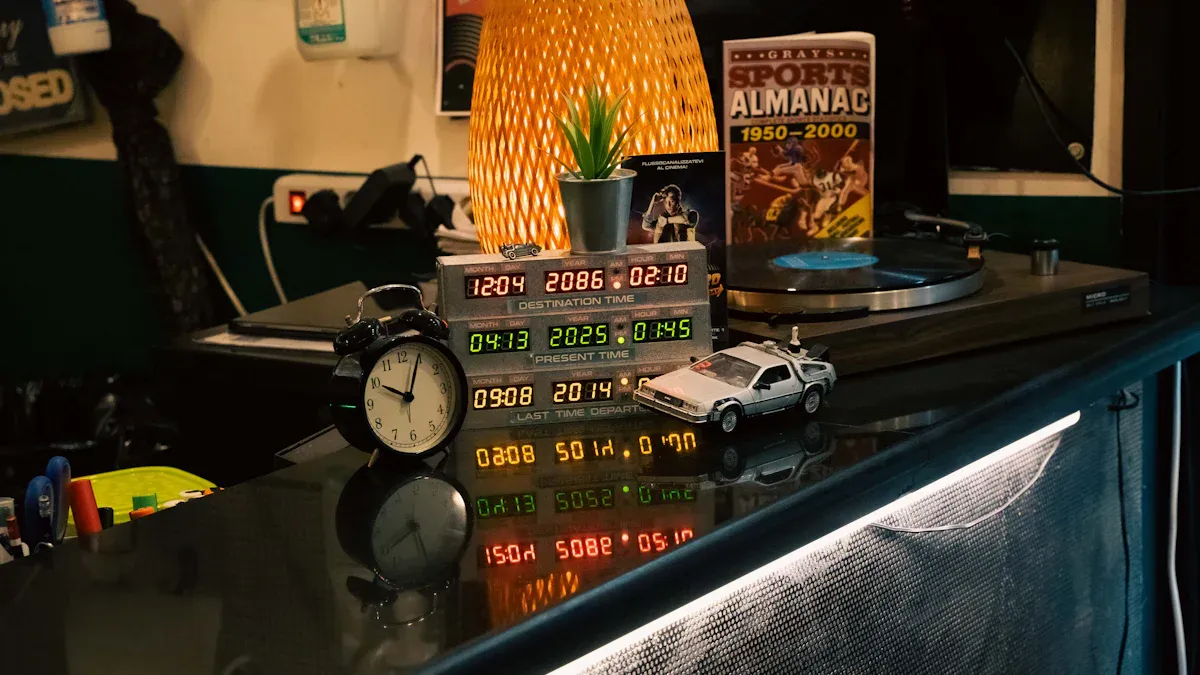Transparent OLED Display Explained for Everyone

If you like technology and museums, you will think transparent oled displays are cool. A transparent oled display shows pictures and words on the screen, but you can also see what is behind it. The transparent oled has special layers that light up by themselves, so it does not need a backlight. You can look at digital information and still see real things through the same screen. This technology makes going to museums and seeing art even more fun!
Key Takeaways
Transparent OLED displays let you see digital images and real things together. This makes them great for museums and fun exhibits. These displays are very thin and can bend. This helps people make cool shapes and designs. They can fit in many places. Each pixel lights up on its own. This gives bright colors and dark blacks. They do not need a backlight, so they save space and energy. Transparent OLEDs let more light pass through than other displays. They let up to 86.7% of light go through. This makes things easier to see. They have interactive features. This makes learning and exploring more fun for everyone.
What Is a Transparent OLED Display?

See-Through Technology
Have you ever wondered how a screen can show pictures and let you see behind it? A transparent oled display does this. When you look at a transparent oled, you see digital things and the real world together. The screen uses special layers that let light go through. It does not need a backlight, so it stays thin and clear.
If you like museums or interactive exhibits, you will think transparent oleds are amazing. They can show facts about an artifact while you see the real object behind the screen. This technology makes digital displays more exciting.
Tip: Transparent oleds can be about 45% see-through. This means almost half the light from behind the screen gets through. The display can look almost like glass.
Key Features
Transparent oleds are special because of how they are built. Every part of the display helps make light and lets you see through it. Here is a simple table that lists the main parts and what they do:
Component | Description |
|---|---|
Transparent substrate | Made of strong glass, lets light go through easily. |
Transparent anode | Moves electricity and stays see-through. |
Hole transport layer (HTL) | Helps move positive charges to the layer that makes light. |
Emissive layer (EML) | Uses organic stuff to make light when powered. |
Electron transport layer (ETL) | Moves negative charges to the layer that makes light. |
Transparent cathode | Finishes the circuit and stays clear. |
Bidirectional light emission | Sends light both ways, not just one. |
You will see that transparent oleds use organic light-emitting layers. These layers glow on their own when electricity goes through. Each pixel lights up by itself, so you get bright colors and strong contrast. You do not need a backlight, which keeps the display thin and bendable.
Transparent oleds let more light through than other displays. For example:
Display Technology | Transparency Level |
|---|---|
OLED | 40–80% |
Transparent LCD | 10–20% |
Transparent oleds let much more light pass than transparent LCDs. This makes them great for places where you want to mix digital images with real things, like fancy store displays or museum cases.
Some important features of transparent oled technology are:
Pixels that light up by themselves for bright, clear pictures.
High transparency, so you see both digital and real things.
Thin and light design.
No backlight needed, so it saves space and energy.
Flexible build, so you can make creative shapes and displays.
If you love digital screens, you will like how transparent oled technology changes how you see information. Whether you look at art, learn about history, or use a cool gadget, transparent oleds make everything more fun and interactive.
How Transparent OLEDs Work
OLED Basics
If you like digital screens, oled technology is interesting. Oleds have a thin layer made from carbon. This layer lights up when electricity goes through it. Each pixel makes its own light. This gives bright colors and dark blacks. Oleds do not need a backlight. This keeps the screen thin and bendy. Oleds are different from other screens because they glow by themselves.
Let’s see how regular oleds and transparent oleds are different:
Feature | Traditional OLEDs | Transparent OLEDs (TOLED) |
|---|---|---|
Emission | Needs a backlight | Makes its own light, no backlight needed |
Transparency | Not see-through when off | |
Structure | Has parts that block light | Has fewer parts that block light |
Sub-pixel Control | Uses normal RGB sub-pixels | Each RGB sub-pixel can be controlled alone |
Optical Clarity | Backlight parts make it less clear | Very clear with thin layers |
Transparent oled screens have fewer things that block light. This lets you see the picture and what is behind the screen. Oleds use organic stuff between two electrodes. One electrode must be clear so light can get out. The color and brightness of each pixel depend on the material and the electricity.
Note: Oleds can bend, so you can make curved or rollable screens. This helps make new kinds of displays for museums and art.
Achieving Transparency
You may wonder how transparent oleds let you see both the picture and what is behind. The secret is in the special layers and the clear cathode. The transparent cathode lets lots of light pass through. It can let up to 86.7% of light through at some colors. This layer also has low resistance and is very smooth. This helps the screen work well and look clear.
Transparent oled screens use organic layers between two clear electrodes. When you turn on the screen, each pixel lights up by itself. When the screen is off or dark, you can see through it like glass. The design keeps the screen thin and light. This means you can use it in fun ways.
Some new ideas help make transparent oleds work:
Wide viewing angles so you can see from the side
Great color for bright images
These things make transparent oleds great for museum displays. You can show digital facts and real objects at the same time.
Displaying Images
When you look at a transparent oled, you see both the picture and what is behind. Each pixel lights up by itself because of the oled design. The screen has a clear base, so light from behind can pass through. The organic layers and clear electrodes work together. They show bright, colorful images without blocking your view.
You can change the brightness and color of each pixel by changing the electric current. The screen can show detailed pictures, words, or moving images and still stay see-through. This makes transparent oleds good for museum displays, art, and fun exhibits.
Tip: Transparent oleds let you make screens in new shapes and sizes. You can make screens that curve or even roll up when you are not using them.
If you like museums or digital art, you will enjoy transparent oled screens. They mix high-quality pictures, flexibility, and see-through design. This makes these screens very special.
Transparent OLED vs. Regular Displays
OLED and LCD Differences
If you like screens, you might wonder how transparent oled is different. There are three main types: transparent oled, regular oled, and LCD. Each type works in its own way.
Transparent oled panels have pixels that light up by themselves. They do not need a backlight. Regular oled screens also use self-lighting pixels, but you cannot see through them. LCD screens need a backlight and filters. This makes LCDs thicker and less clear.
Here is a table to show how they compare in brightness and how long they last:
Display Type | Typical Lifespan (hours) | |
|---|---|---|
Transparent OLED | 150–600 | |
Regular OLED | 1000–5000 | 20,000 to 100,000 |
LCD | Requires external backlight | 30,000 to 60,000 |
Transparent oled screens let you see digital images and real things behind the display. Regular oled and LCD screens block what is behind them. Transparent oleds last as long as regular oleds. They often last longer than LCDs.
Note: Transparent oled screens are thin, light, and bendable. You can use them in cool ways, like museum displays or art.
Visual Experience
When you look at a transparent oled, you get a special view. You see bright colors, clear pictures, and the real world together. Transparent oleds show more colors than LCDs. They reach over 100% NTSC color space, so colors look bright and real. The best LCDs reach about 72% NTSC color space. Oled screens, including transparent oleds, light up each pixel. This gives you better colors than LCDs.
Transparent oled screens show more colors.
You get better color accuracy than LCD screens.
Each pixel lights up, so you see deep blacks and bright spots.
If you use transparent oleds in a museum, you can read facts and see the artifact behind the screen. This makes learning fun and hands-on. Transparent oled screens work well in bright places. Some can reach up to 4,000 nits outside. Regular screens may only reach 2,000 nits.
Display Type | Minimum Brightness (nits) | Key Features |
|---|---|---|
Transparent OLED Displays | 2,500 - 4,000 | High-efficiency LED backlights, automated brightness control, optical bonding, anti-reflective coatings |
Regular Displays | 1,500 - 2,000 | Standard brightness levels, may lack advanced features for outdoor visibility |
If you enjoy display technology, transparent oleds are exciting. They change how you see and use digital screens, especially in museums where you want to mix facts and real objects.
Uses and Benefits of Transparent OLED

Real-World Applications
You can see transparent oled displays in many cool places. Museums use these screens to make exhibits more interesting. For example, BOE’s 55-inch screen lets you look at old wooden bridges and learn about them. The 105-inch 万境屏 shows animated stories from Chinese art. The smart calligraphy desk helps you practice writing and watch your strokes on a clear screen.
Here is a table that shows where transparent oleds are used:
Application Area | Description |
|---|---|
Museums & Cultural Heritage | Shows digital facts and animations with real artifacts. |
High-End Retail & Showrooms | Makes product displays that mix real items and digital effects. |
Smart Homes & Architecture | Adds interactive features to glass walls and furniture. |
Automotive Displays | Puts screens in car windows and dashboards for cool controls. |
Interactive Art Installations | Mixes digital art with real objects for special experiences. |
You might also find transparent oleds in famous art shows. Some examples are the Transparent OLED Photo Wall and the PIXELBLOOM: Timeless Butterflies exhibit.
Advantages
Transparent oled technology gives you many good things. You get bright colors and dark blacks because each pixel lights up alone. The screens are thin and light, so they fit almost anywhere. You can see digital images and real things at the same time. This makes learning and exploring more fun.
Some main advantages are:
Wide viewing angles, so pictures look clear from any side.
Flexible design for curved or custom screens.
Interactive features for museums and stores.
Saves space because the screens do not block your view.
You can use transparent oleds for ads, teaching, or even at home. The flexible design lets you mix technology with art and culture in new ways.
Tip: Transparent oled screens let you enjoy digital things and still see the real world.
Limitations
Transparent oleds have some problems you should know about. These screens can cost more because they need special materials and careful making. Sometimes, they are not as bright as regular screens, especially if you use more than one panel. They can be easy to damage if the environment is tough.
Here is a table of common problems:
Limitation Type | Description |
|---|---|
Cost | |
Brightness | Not as bright in some places, especially with many panels. |
Durability | Can be damaged by the environment, which affects how long it lasts. |
It can take time to find the best ways to use transparent oled screens. The technology keeps getting better. More people will use it as prices drop and new ideas come out.
You now know that a transparent oled display lets you see both digital images and real things at once. This technology uses pixels that light up by themselves. It also has clear layers. These work together to make bright and colorful pictures. They do not block what is behind the screen. Experts think you will see these displays in lots of places soon.
Public transport will show travel info while you look outside.
Stores will use interactive windows to get people’s attention.
Smart homes and offices will have screens in glass walls and windows.
Feature | Benefit |
|---|---|
Seamless Integration | |
Interactive Capabilities | Lets you use touch and gestures for fun. |
Eye-Catching Visuals | Shows bright images that stand out. |
Customization Options | Works in many places and meets different needs. |
Picture seeing art, learning about history, or finding directions on a screen that feels part of your world. The future for transparent oled display technology is exciting and full of new ideas.
FAQ
What makes transparent OLED displays different from regular screens?
You see both digital images and real objects at the same time. Transparent OLED screens do not need a backlight. Each pixel lights up by itself. This creates bright colors and a see-through effect that regular screens cannot match.
Can you touch and interact with a transparent OLED display?
Yes! Many transparent OLED displays support touch. You can tap, swipe, or draw on the screen. This makes museum visits and art exhibits more fun and interactive. You feel like you are part of the display.
Where can you find transparent OLED displays in real life?
You often see them in museums, art galleries, and high-end stores. Some smart homes and cars use them too. I love seeing them in museum exhibits because they blend digital facts with real artifacts.
Are transparent OLED displays safe for your eyes?
Transparent OLED displays use gentle, self-emitting light. You get less glare and softer images. Many people find them comfortable to look at for long periods. Always remember to take breaks when using any screen.
How do transparent OLED displays help museums?
Museums use transparent OLEDs to show information without hiding artifacts. You read facts, watch animations, and still see the real object behind the screen. This makes learning more exciting and helps you connect with history and art.
See Also
Exploring OLED And LED: Key Differences In Display Tech
The Importance Of LCD Technology And Its Functionality
Display Technology 101: A Comprehensive Beginner's Overview
Understanding LTPO: Enhancing Battery Life And Display Smoothness